-
Membership
Membership
Anyone with an interest in the history of the built environment is welcome to join the Society of Architectural Historians -
Conferences
Conferences
SAH Annual International Conferences bring members together for scholarly exchange and networking -
Publications
Publications
Through print and digital publications, SAH documents the history of the built environment and disseminates scholarship -
Programs
Programs
SAH promotes meaningful engagement with the history of the built environment through its programs -
Jobs & Opportunities
Jobs & Opportunities
SAH provides resources, fellowships, and grants to help further your career and professional life -
Support
Support
We invite you to support the educational mission of SAH by making a gift, becoming a member, or volunteering -
About
About
SAH promotes the study, interpretation, and conservation of the built environment worldwide for the benefit of all
Cuba: Day 11 - Camagüey, Bayamo and Santiago de Cuba
Many people have asked me what cities I found to be the highlights of the trip. Although I enjoyed every one of them, it was not hard for me to come up with a “Top 3” list. Without a doubt, Havana is at the top of this list for me and Camagüey also holds another spot. I think I loved Camagëy so much for a number of reasons. The first is the friendliness of everyone I met there. I had read that Camagüey is considered by many to be “the most Cuban of Cuban cities.” Not quite sure what this meant, I asked the driver of a bicycle taxi and after thinking for a moment he confirmed my observations, that perhaps it is because camagueyanos are friendlier and enjoy life more than people in any other city. The second reason is that we just came from Trinidad, a city that, while beautifully preserved, is now very touristy and lots of inhabitants work their hardest to make some money off of the tourists that pass through. In Camagüey it was easy to just enjoy the city, and a very clean city at that! And finally, and this has little to do with the city itself, my experience of the city was enhanced by how we saw it, by taking a bicycle taxi tour of the city! A horde of bicycle taxis gathered around the corner of our hotel, and two by two we mounted our transportation. We whizzed through the streets, the drivers joking and laughing with one another and jockeying for position in a playful manner, even when they were battling an incline.
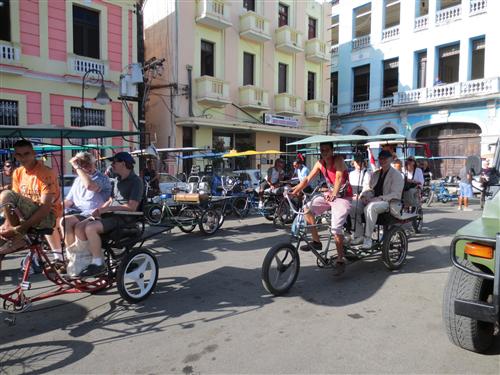
Our taxis took us to many stops, one of which was the Parque Agramonte (named after a local hero of the wars of independence) where we entered the Catedral de Nuestra Senora de Candelaria Santa Iglesia (Cathedral of Our Lady of Holy Candelmas). Older church structures existed in this space and over time parts have been added and subtracted to result in the church that stands today. Its current form is heavily indebted to an enlargement in 1864. The interior of the church was breathtaking, with ceilings painted in a beautiful Art Nouveau pattern.
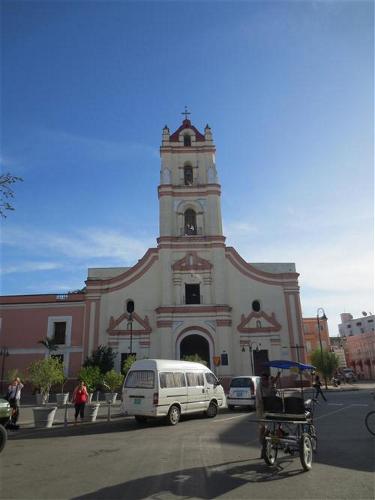
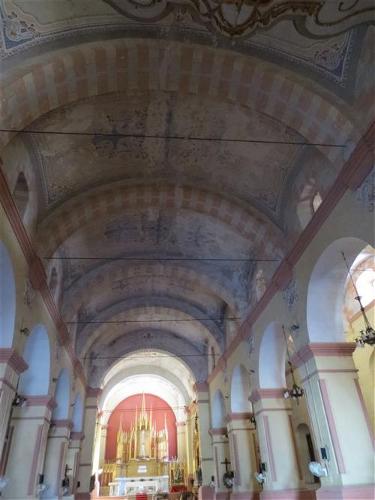
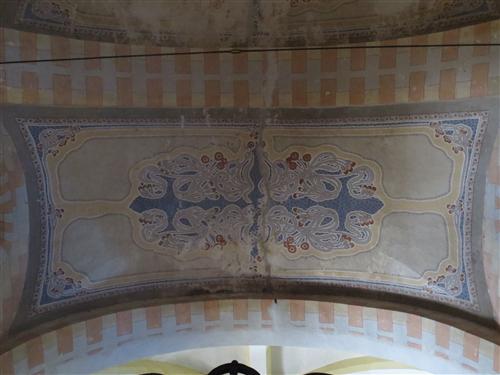
Like Trinidad, many of the colonial houses in Camagüey have tall windows with grills and decoratively carved roof rafters.
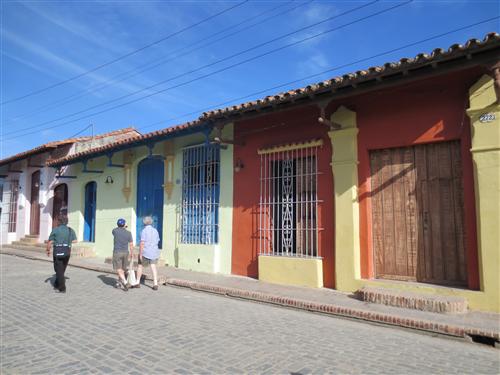
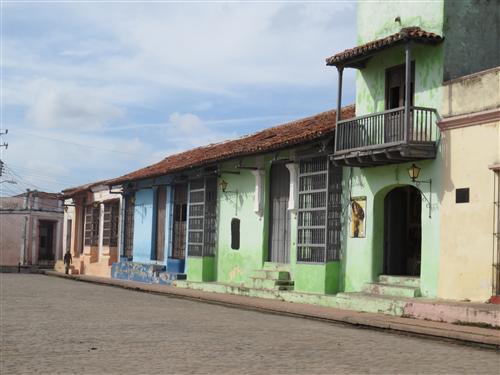
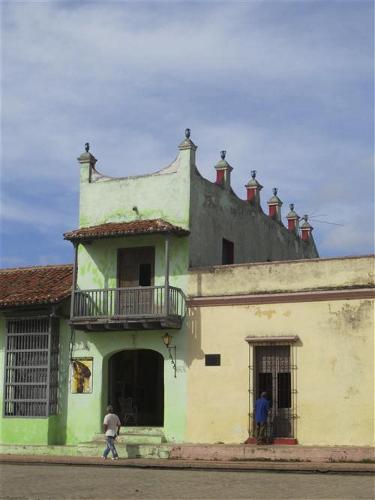
After we left Trinidad we made a short stop in Bayamo, yet another of the seven settlements of Diego Velázquez. Our visit was focused on the main town square and the next square over, which contains the Catedral del Santisima Salvador (Cathedral of the Holy Savior). Constructed in 1869, this church also contains a chapel from 1630. One of the most interesting features of the church is its painted decoration. The church contains a series of paintings that show the importance of the church in the wars of independence. One depicts a historical scene of the father of the church blessing the first Cuban flag during the wars of independence.
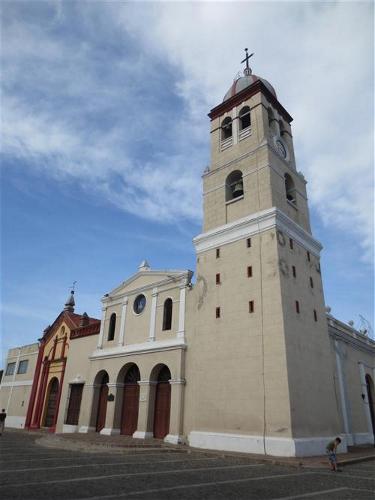
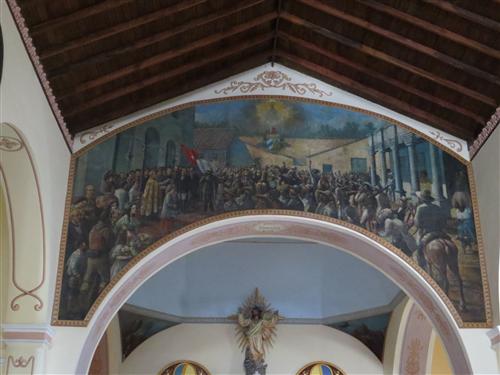
Our last stop of the day was quite an adventure, and surely no other group except an SAH Study Tour puts this on their itinerary! We drove slowly through small towns and climbed higher into the mountains. The looks from the people on the street confirmed that we were definitely off of the normal tourist path. Our destination was the Forestry Research Station, designed by Walter Betancourt and built 1969-1971. Monty talked about Betancourt before we arrived and told us how this Cuban-born architect studied in the U.S. and turned down a position at Taliesin West to return to Cuba to build for the Revolution. We were prepared for some Frank Lloyd Wright influence, but I think were all surprised by the extent of it when we reached the site.
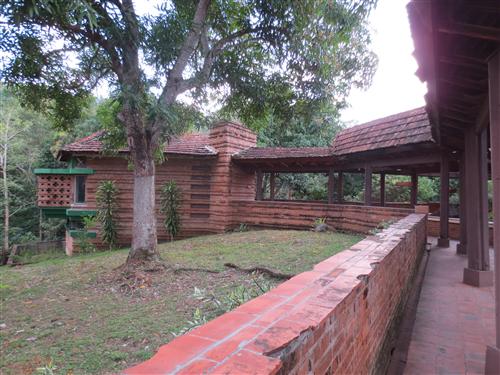
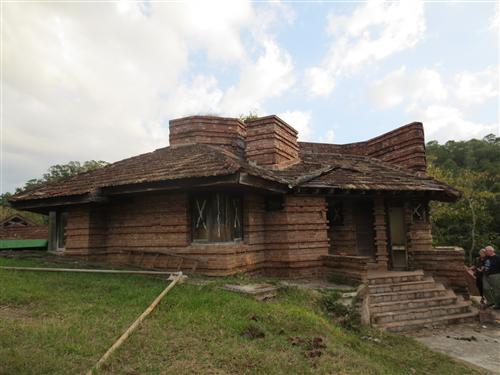
After this we traveled on to Santiago de Cuba, arriving under the cover of darkness and wondering what sort of city would be reveled to us in daylight.
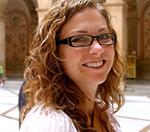 Erica N. Morawski, Ph.D. Candidate, University of Illinois - Chicago
Erica N. Morawski, Ph.D. Candidate, University of Illinois - Chicago Erica N. Morawski is a Ph.D. candidate in art History at the University of Illinois – Chicago. She received a BA in art history at Tulane University and MA in Art History at the University of Texas at Austin. She is currently completing a dissertation entitled, “Designing Destinations: Hotel Architecture, Urbanism, and American Tourism in Puerto Rico and Cuba.” This work investigates the role of hotels in shaping understandings of national identity, which in turn shaped international relationships, through an approach that systematically ties object and image analysis with social, political, and economic histories. Her work argues that these hotels functioned, and continue to function, like diplomatic cultural attachés—their design shaped politics on the islands, and played a decisive role in shaping past and current international relations.



Leave a commentOrder by
Newest on top Oldest on top